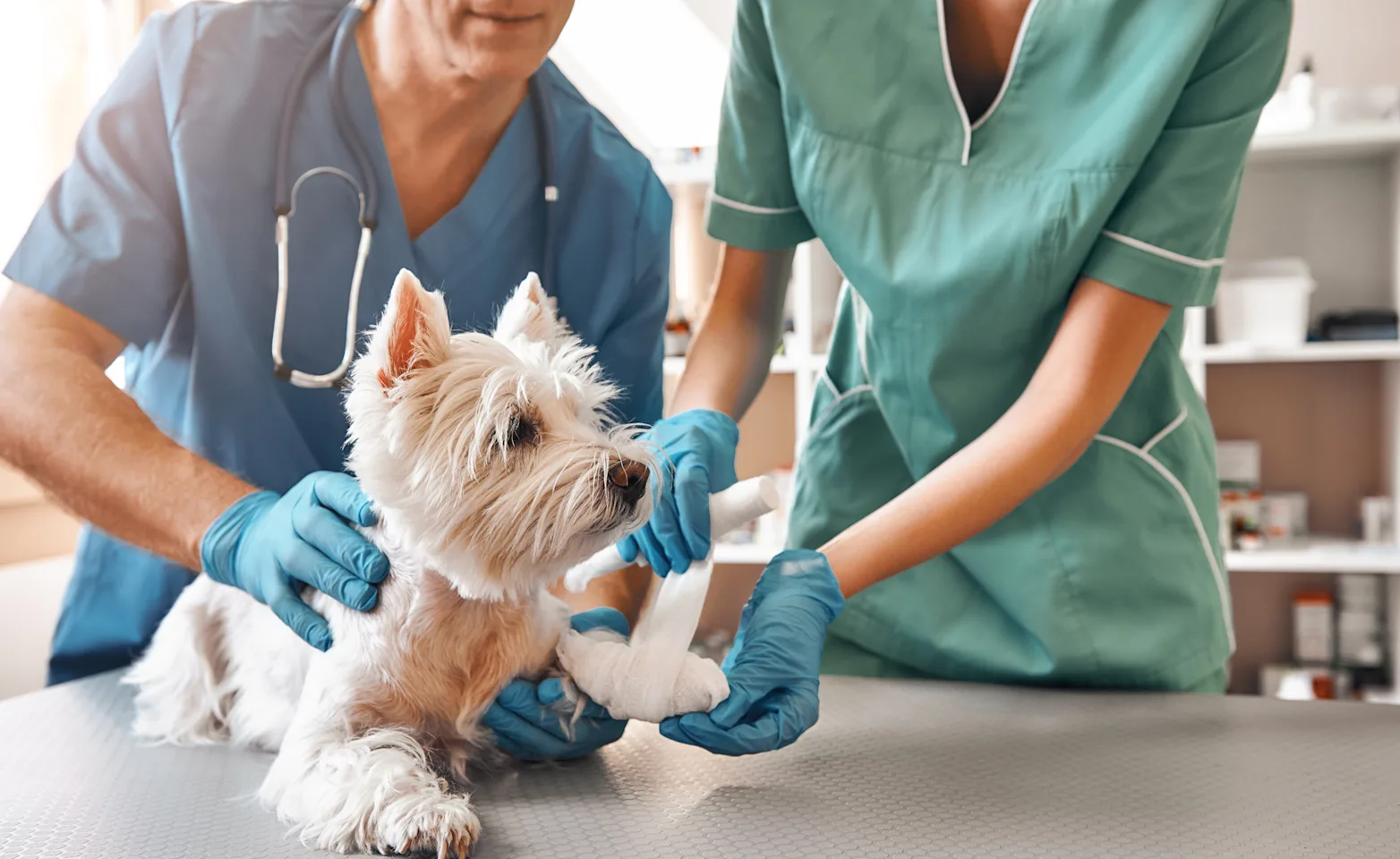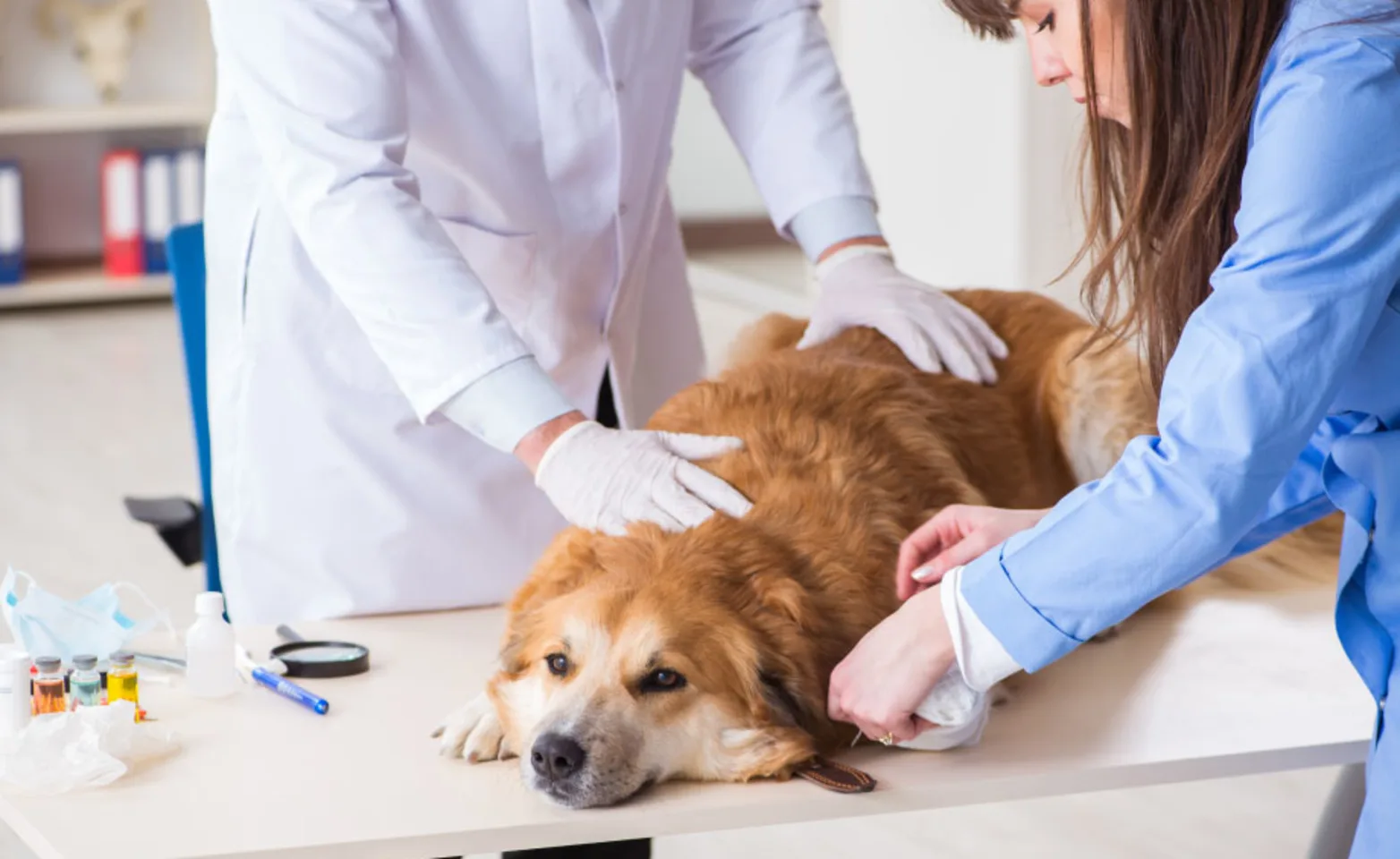Nashville Veterinary Specialists
Wound Management
Information provided by Heather K. Streppa, DVM, MS, DACVS, Nashville Veterinary Specialists
Wet-to-dry bandages have been the traditional choice for wounds that need to granulate to allow secondary closure or second intention healing. Healthy tissue can be removed when they are changed, though, and because they are permeable, bacteria can penetrate more easily. Changes tend to be painful and the bandages have to be changed frequently, even twice daily to be effective.

Moisture-Retentive Dressings
Moisture-Retentive Dressings (hydrocolloids, hydrogels, alginates) create a warm, moist environment that enhances cell proliferation and early phases of wound healing. The wound fluid provides a physiologic ratio of proteases, protease inhibitors, growth factors, and cytokines at each stage in healing. White blood cells stay in the wound and perform selective autolytic debridement. Low oxygen tension deters bacterial growth, favors collagen synthesis and angiogenesis, and acts as a chemoattractant for white blood cells. These dressings are less painful due to wound fluid covering and non-adherence.

Vacuum-Assisted Wound Closure
Vacuum-Assisted Wound Closure involves the application of an open-cell polyurethane foam sealed with an adhesive bandage. Constant negative pressure (max -125mmHg) is applied by a portable suction pump. Mechanical forces (macrostrain and microstrain) draw wound edges together, remove exudate and infectious material, and promote perfusion and granulation tissue proliferation.
Both of these systems typically remain in place for 3-5 days. While the initial application and materials may be more costly, the overall cost becomes comparable to wet-to-dry bandaging because the total number of and spacing between bandage changes is less. Patients also tend to be more comfortable and wounds have less risk of contamination with these impermeable systems.
Both types of wound dressings are currently being used at Nashville Veterinary Specialists. Please contact any of our surgeons if you have a patient with a challenging wound.
